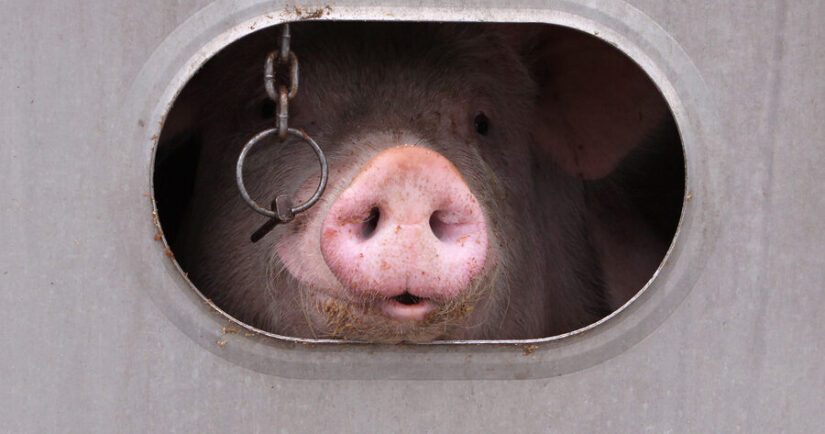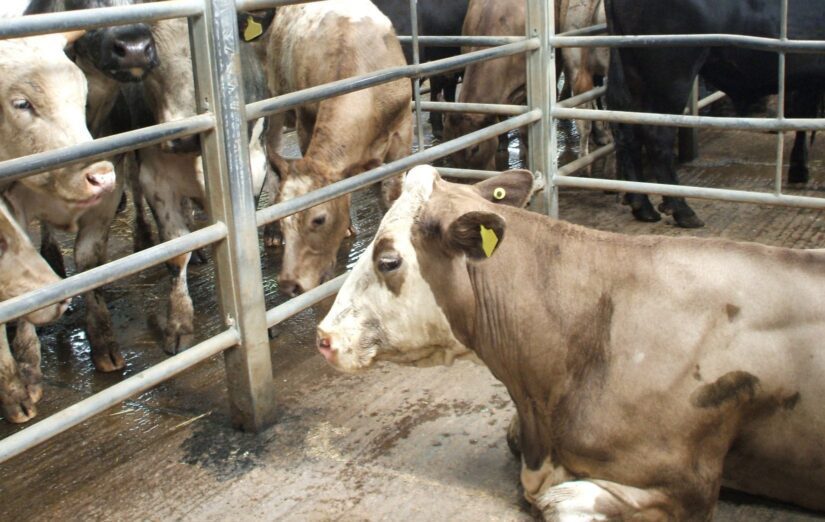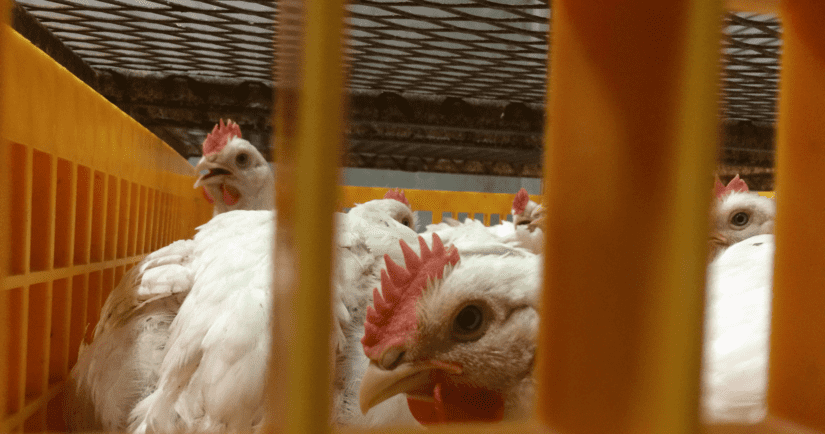Animal transport
Farm animals raised for food are often transported multiple times throughout their lives, as many farms are now specialized for certain stages of production. At the very least, farmed animals ready for market typically have to be transported off-farm for slaughter.
Transport can be a very stressful time for animals, causing pain, suffering, and distress. With over 770 million animals transported each year in Canada, it is very important to recognize the causes of animal suffering during transport and ways to prevent it.
What causes pain, suffering and distress during transport?
- Rough handling resulting from untrained people trying to speed up the loading or unloading process
- Overcrowding of animals on the vehicle, resulting in further injuries, fighting behaviours and sometimes even suffocation
- Transport in adverse weather conditions, with no temperature control in the transport vehicle – sometimes animals’ bodies freeze or overheat to the point of death
- Long periods of time with no food, water, comfortable bedding, or rest – some animals are transported for so long that they become dehydrated and weak.

Laws for farmed animals in Canada regarding transport can be found in the Health of Animals Regulations (HAR). New updates to this legislation came into effect in 2020.
Positive improvements to the legislation based on the BC SPCA’s submission:
- Animals that are high risk and need special care, such as those that are pregnant, injured or ill, are more clearly identified and better protected
- There is a decrease in the length of time transported without food, water and rest for commonly farmed animal species such as cows, pigs and chickens
- New guidelines for unacceptable handling methods have been outlined, including prohibitions on beating or kicking animals, or holding them by the wings or horns
- There is a definition of overcrowding, which includes ensuring that animals are transported in their preferred position (e.g. laying, sitting, or standing)
There is still much room for improvement!
- Producers can still use painful electric prods as a primary means of handling adults cows and pigs
- There are no clear guidelines for maximum and minimum temperatures that limit when an animal can be transported
- The amount of space each animal must have is not outlined
- The transport times still exceed recommendations from a number of scientific reports, and are still longer than the maximum transport times allowed by our international trading partners
Maximum transport times without feed, safe water and rest:
- Compromised animals: 12 hours
- Broiler chickens, spent laying hens and rabbits: 24 hours (safe water), 28 hours (feed and rest)
- Horses and pigs: 28 hours
- All other animals: 36 hours
We will continue to advocate for humane transport of animals at every opportunity. The Canadian Food Inspection Agency updates the HAR as necessary, and concerns regarding the humane transport of farmed animals can be directed to them.
Livestock auctions
Livestock auctions are a common occurrence in the animal agriculture industry. This is where producers will bring their animals to be bought and sold for profit, including sold for slaughter.

Auctions are a stressful place for animals for many reasons:
- Animals can be transported for long hours without food and water, only to arrive at a noisy and unfamiliar place. Sometimes, they do not receive food or water during their entire time at an auction.
- Many animals being advertised for sale have untreated diseases and injuries.
- When animals are stressed, they can go into fight, flight or freeze mode. Sometimes animal handlers at auctions use rough methods like electric prods to move an animal that is stressed.
Animal slaughter
The BC SPCA advocates for only humane methods to be used for the killing of any animal. All farmed animals must be stunned prior to slaughter so that they are fully unconscious at the time of death. Despite this, the time leading up to slaughter and the process of slaughtering can lead to suffering in animals.
Some of the risks to the animals’ well-being at this time include:
- Suffering relating to transportation to the slaughter facility
- Stress before being killed due to being grouped with unfamiliar animals
- Injury, stress, and fear from being handled roughly, sometimes resulting in broken limbs
- Severe pain and distress if the animal is inadequately stunned (is awake or alert while killed)

Concerned about animal transport and slaughter practices?
Learn more about the laws protecting farmed animals during transport and slaughter, and how you can take action to help end animal suffering in transport and during slaughter.
Subscribe to our action alerts to be notified of opportunities where you can speak up and end animal suffering.
Subscribe to FarmSense
Are you passionate about farm animal issues? FarmSense is delivered four times a year and includes news about farm animal welfare, research and updates on what the BC SPCA is doing to help further farm animal welfare in Canada.
